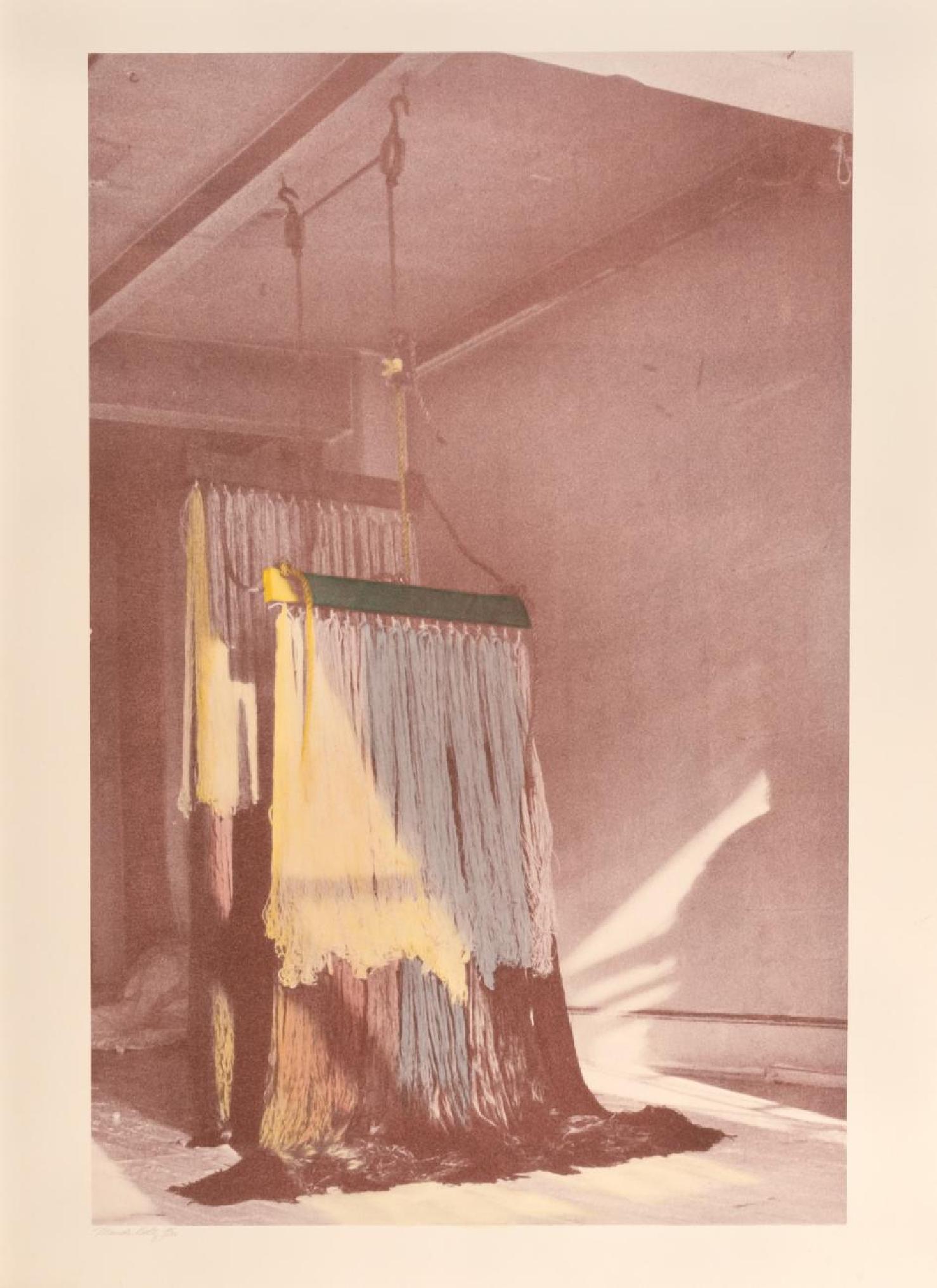“In my most recent work, Endless Summer, the textuality central to my earlier works resurfaces. The quilt I have created is the convergence of years of works as an artist. It references my rural childhood, and my 1970’s sculptural interpretation of that upbringing, but also stands alone as an innovative contemporary piece, a juxtaposition of the disparate art forms of quilt making and digital manipulation.”
At an early meeting with her co-founders at A.I.R., during which they shared slides of each other’s work, Maude Boltz experienced the feelings of community and pride that had been previously lacking in her artistic career. Like many of her peers, Boltz found it difficult to navigate the male-dominated, often oppressive art world, and her work was frequently overlooked by commercial gallerists. Joining A.I.R. introduced Boltz to a community of women artists who refused to compromise their individual creativity for public appeal. By submerging herself in an environment that encouraged out-of-the-box thinking, with virtually no pressure to conform to a certain style or method, Boltz developed a broad range of artistic skills during her decade-long membership that afforded her greater recognition for her work, in addition to a more acute sense of herself as an artist.
Boltz began her artistic career focusing on the tactile. Best known for her sculptural works that incorporated materials such as canvas, dyed cloth, hemp, chains, and wood, Boltz constructed objects that forged relationships between seemingly disparate elements. She experimented with size and shape to elicit a broad range of emotional responses from her audience. Her sculptures evolved over the years; at once large-scale and expansive enough to fill a room, her work later contracted, tightening itself to fit neatly on the wall of the gallery space. Boltz’s 1973 wall hanging, Rain Dance, is one example of the compact derivations of her room-consuming wood and rope structures. Rain Dance hangs by a thin string connected to a horizontal wooden rod, from which colored string droops down to another wooden rod where more string is sparsely tied and dangling. The subtle tension this work evokes gently reminds the viewer of the strength of soft material.
In addition to sculpture, Boltz is also known for her paintings, installations, watercolors, and inkjet prints. A self-described “re-emerging” artist, Boltz took a break from her creative practice for a few years to focus on Mahayana Buddhism. A self-realization drew Boltz back to artmaking, and it was at this time that Boltz felt compelled to make work using Photoshop. Digitally manipulating images reminded her of her watercolor period: having used a specific type of Japanese paper with a deco edge at one point in her career, Boltz would apply color that responded to the material in a unique way. When the paper she used was discontinued, Boltz attempted watercolor on different surfaces that had nowhere near the same effect as the original. It was only until her foray into Photoshop that Boltz experienced a similar excitement over the endless possibilities for color to become warped and pushed to its limits.
Maude Boltz received her Bachelor’s in Fine Arts from the Philadelphia College of Arts in 1962, and a Masters in Fine Arts at the Yale University of Art and Architecture in 1964. As a co-founder at A.I.R., Boltz took on the responsibility of photographing her fellow artist’s work, effectively archiving much of what was shown at the gallery in its early days. She has shown extensively in the U.S. and has participated in shows abroad, notably the first European Women’s show at Amerika Haus in Hamburg, Germany in 1972. Her awards include a Virginia Center for the Arts Fellowship and a C.A.P.S. grant for graphic art.
member 1972-78 | 1939-2017 | New York, NY
+ Exhibitions
+ Selected Press
+ Publications
+ Public Collections
+ Website


